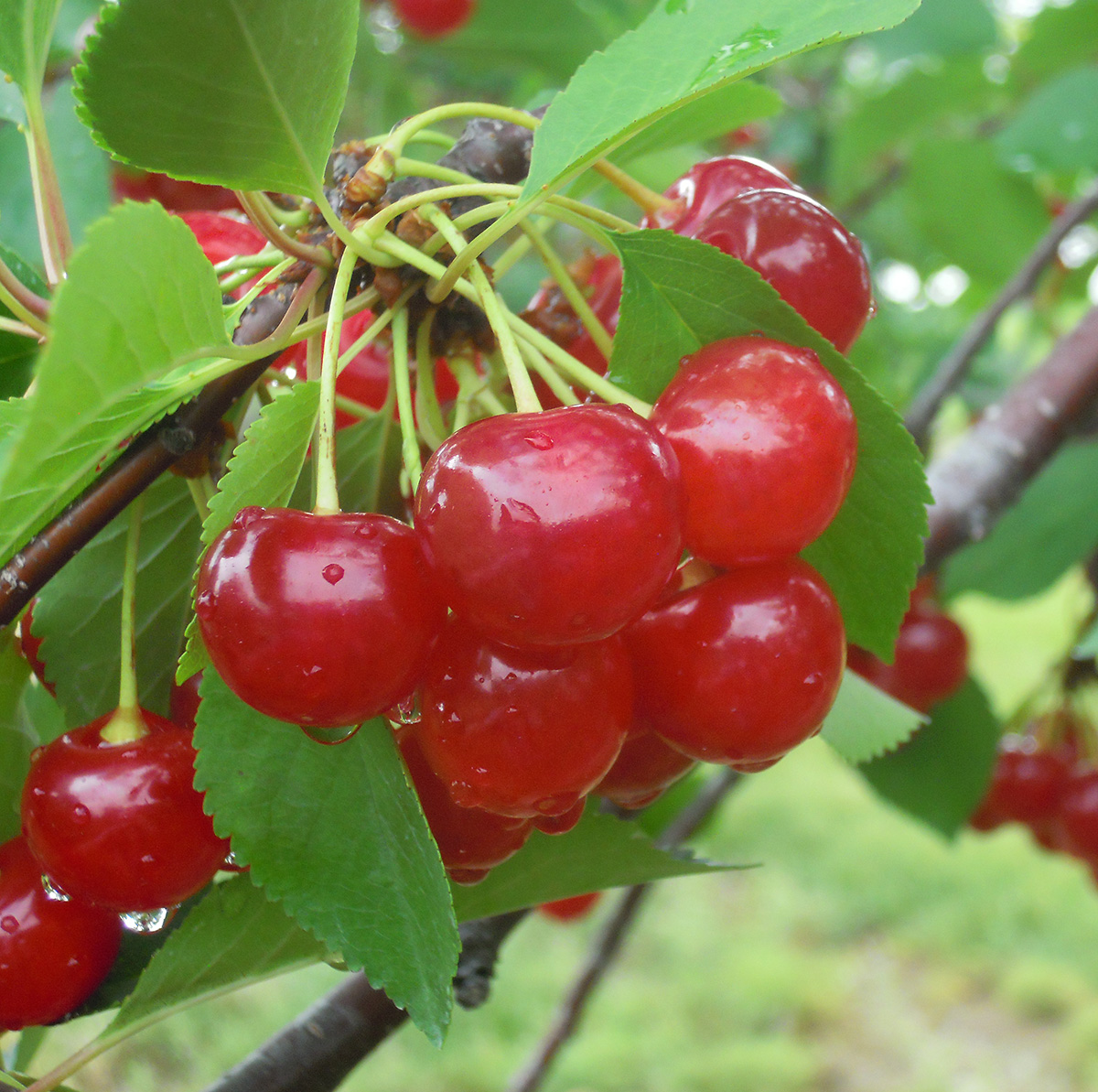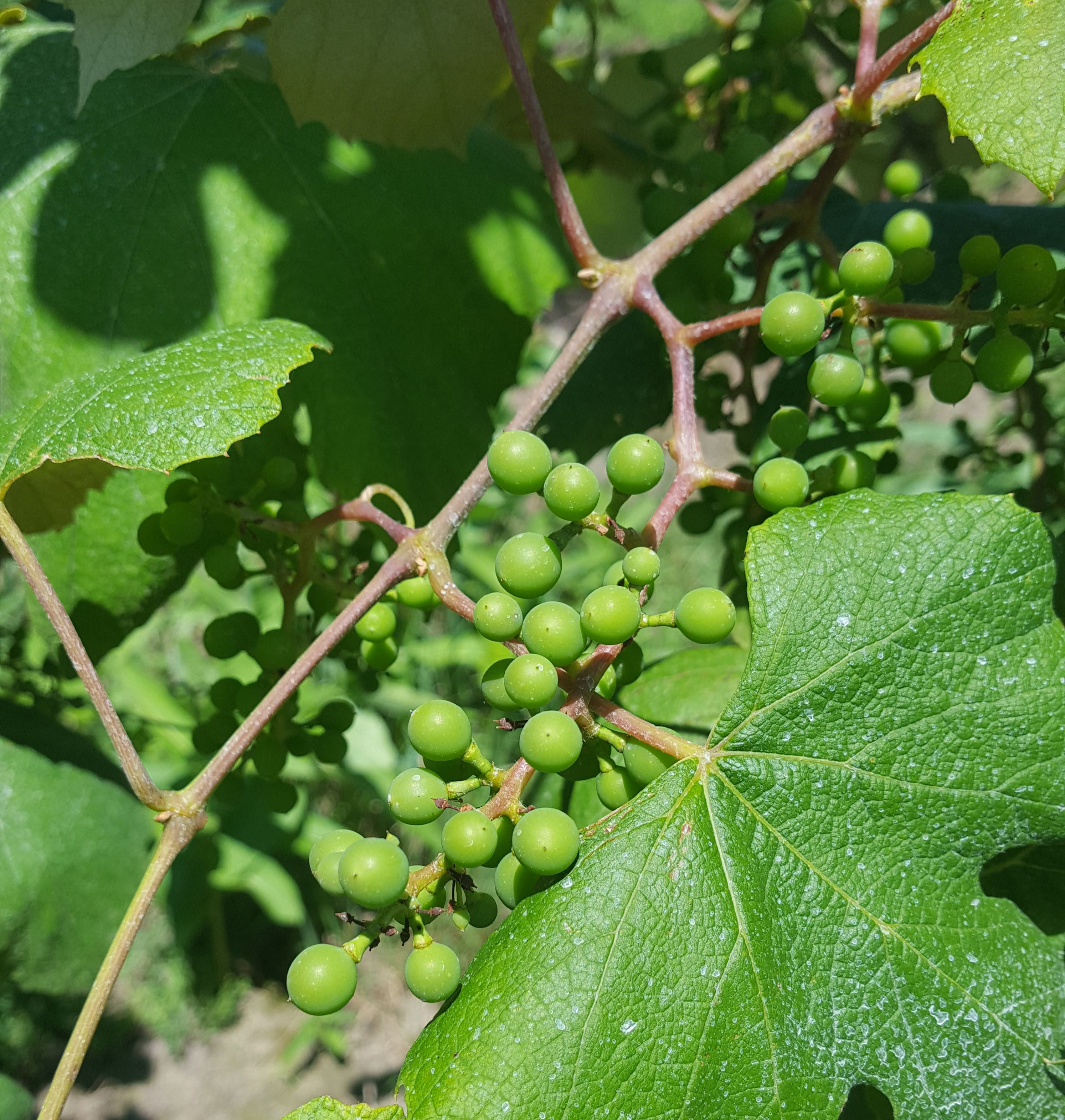Southwest Michigan fruit update – July 2, 2019
Sweet cherry harvest is underway. Harvest in berry crops will begin after the Fourth of July.

Weather
Last week was hot, with highs in the upper 80s and lows in the 60s. Storms moved through the area on Monday, dropping another inch of rain. Precipitation totals for the week ranged from 0.3 to 1.6 inches, with an average of 0.9 inches. This was the major rain event last week. Rainfall totals for the season range from 12 to 17 inches across the region since April 1. Soils are wet. The forecast for this coming week is for hot and humid conditions, with highs near 90 and lows near 70. There is a good chance of thunderstorms this week. Soils are beginning to dry out, but heavier soils are still wet with standing water in the worst areas. With warmer temperatures, we picked up a lot of heat units, 220 GDD base 42 and 164 GDD base 50.
|
Southwest Michigan GDD summary from March 1 through June 30, 2019 | |||
|---|---|---|---|
|
Station |
GDD 42 F |
GDD 45 F |
GDD 50 F |
|
1408 |
1165 |
820 |
|
|
1460 |
1215 |
864 |
|
|
1268 |
1038 |
714 |
|
|
Average for the SW region |
1426 |
1183 |
837 |
|
Accumulation last week |
220 |
199 |
164 |
Check out the animated weather forecasts from Jeff Andresen at the weather tab in the Michigan State University Extension Fruit & Nuts Page. Articles and other regional reports can be found at the Fruit News page.
Tree fruit
First catch and biofix for first generation Oriental fruit moth was on May 6 (165 GGD base 45) at the Trevor Nichols Research Center. The second generation flight of Oriental fruit moth should begin soon and we are seeing trap catch numbers up in a few traps. First trap catch and biofix of Obliquebanded leafroller was June 14. San Jose scale crawlers have been hatching over the past two weeks. Brown marmorated stink bug activity is increasing as well.
In peach and nectarine, trees shoot flagging due to Oriental fruit moth larvae tunneling in the shoot tips started showing about two weeks ago. The high temperatures expected this coming week will put additional stress on winter damaged trunks. Anticipate yellowing of the older leaves and wilting on severely damaged trees. Weakened trees are especially attractive to borers. It’s time to protect trunks with insecticide sprays for borers. Bacterial spot symptoms are becoming easier to see, with leaves yellowing and dropping.

Cherries are ripening. Sweet cherry harvest is underway. Tart cherries are red and harvest will begin later this week. Cherry leaf spot symptoms have become very easy to see in tart orchards. Cherry leaves are always susceptible to leaf spot, so management is needed to maintain a healthy leaf canopy during the entire season. Some leaf drop is due to bacterial canker infections from earlier in the season. There is no treatment for bacterial canker now and the disease will not spread. Ripe and ripening cherries are attractive to spotted wing Drosophila (SWD). We are catching only a few SWD at this time. Normally, SWD do not build to high numbers until the end of tart cherry harvest in southwest Michigan, but risk is increased if earlier ripening soft fruit are nearby. New obliquebanded leafroller larvae may be in the trees now. It may be necessary to apply insecticides to control these insect pests.
The plum crop is light. Obliquebanded leafroller and codling moth damage to fruit will be a greater risk in July as larvae hatch and grow.
Apple fruit are growing rapidly and hand thinning is underway. Some growers are reporting continued fruit drop. Shoot and foliage growth has been lush, and excessive foliage growth increases the potential for bitter pit for apple varieties prone to this disorder. Fire blight infections are appearing now. At this stage, if only a few isolated infections are in the orchards, cutting out the infection may be a good way to go. Primary apple scab season is over. Growers with scab lesions on the leaves and fruit should include fungicides in their upcoming cover sprays. Unsprayed apples and crabapples show very high levels of scab and these trees are defoliating. The Enviroweather sooty blotch and flyspeck model indicates that spray applications for these diseases may be necessary as some sites are approaching 240 hours of canopy wetness since petal fall. Codling moth egg hatch is underway. First catch and biofix for codling moth varied by several weeks across the region. First catch varied from May 17 to May 31. A strong flight began in most sites on May 24, during the warm Memorial Day weekend.
Pear fruit are sizing rapidly and hand thinning is underway. The time of rapid shoot growth with succulent leaves is the primary treatment window for pear psylla. The first generation codling moth is not a problem in hard pears.
Small fruit
We are still catching only a few spotted wing Drosophila (SWD). However, we expect numbers to increase soon, as wild hosts such as mulberry and bush honeysuckle have ripe fruit. It’s an important time to monitor this pest. Control for SWD focuses on the ripening fruit. Sometimes early season fruit, such as strawberries, early summer raspberries and early season blueberries, can be harvested before this pest builds to high numbers. With the late start of the harvest season, do not assume that this pest will pass you by. Place traps near early ripening wild fruit so you have an idea of the local population. Monitor your fields and wild fruit near your field and be prepared to spray to protect ripening fruit. Check out "Plan to change when dealing with spotted wing Drosophila" for more information.

Grapes are at buck shoot berries in juice and wine grapes are at berry shatter. Post bloom sprays are important to control diseases on grape berries. Use materials or a mix of fungicides to control all the fruit diseases, downy mildew, phomopsis, powdery mildew and black rot which can infect new green tissue as it is exposed. Downy mildew, black rot leaf lesions and phomopsis on the leaves and stems can be found in vineyards now. We are also seeing Dead Arm (Eutypa) symptoms in the vineyards. Infected cordons and trunks should be removed. Grape berry moth larvae are feeding in the clusters. Bloom in wild grapes is used to set the Grape Berry Moth model on Enviroweather and determine the spray timing for treating the second and third generations. Wild grape bloom began about May 31 in central Berrien County and June 1 in Van Buren County. Controls are targeted for 810 GDD base 50 after bloom in wild grapes. We are currently at about 600 GDD base 50 and sprays may be needed in the next week to 10 days.
Blueberries have green fruit and fruit seem to be sizing well. The crop is looking better as the fruit sizes. Early varieties are coloring and harvest of the earliest varieties should begin right after the Fourth of July. Cherry fruitworm flight has finished. We are still catching cranberry fruitworm, but the numbers are low. The disease focus is on anthracnose. Tailor your green fruit fungicide choice to controlling anthracnose. We are seeing more shoot collapse from phomopsis.
Strawberry harvest from matted row plantings is winding down and will end quickly under these hot conditions. Growers should be preparing to renovate their plants immediately after the end of harvest.
Raspberry and black raspberry harvest should begin soon. We are starting to see some color in the berries. Primocanes are 12 to 24 inches tall
Cranberries are past full bloom.
Related Articles:
Southwest Michigan fruit update – June 25, 2019
Michigan spotted wing Drosophila update – June 26, 2019
Plan to change when dealing with spotted wing Drosophila
MSU vineyard IPM scouting report – June 19, 2019
Disease control in grapes critical during and after bloom



 Print
Print Email
Email
